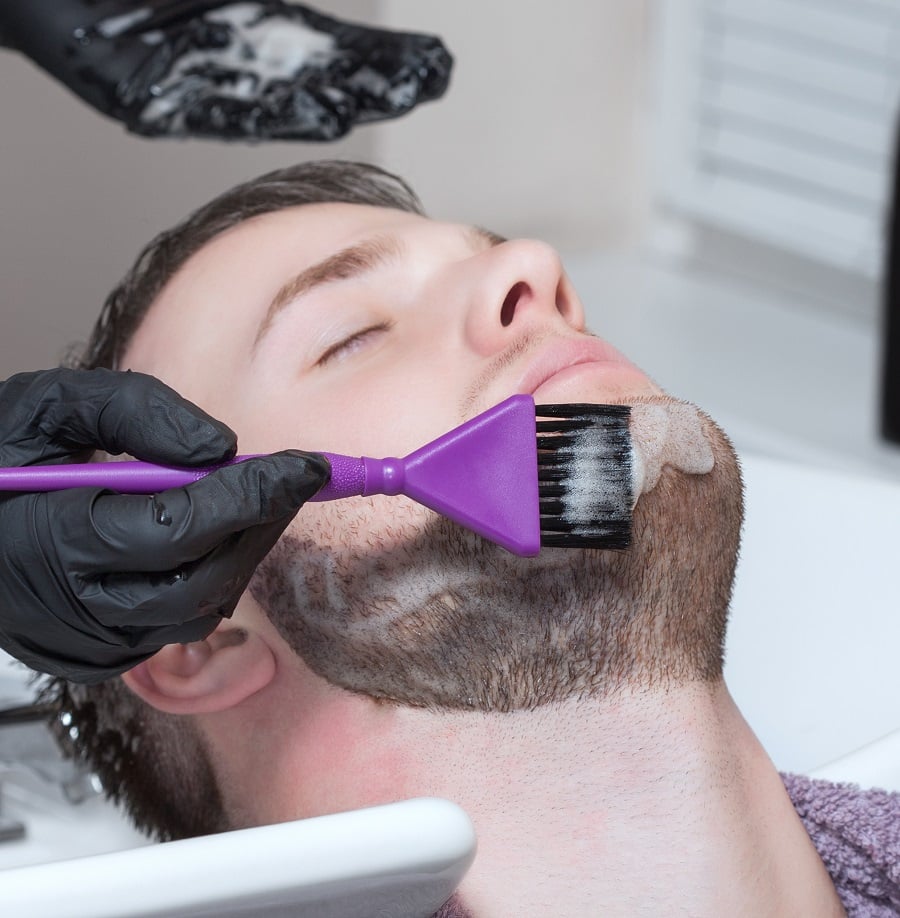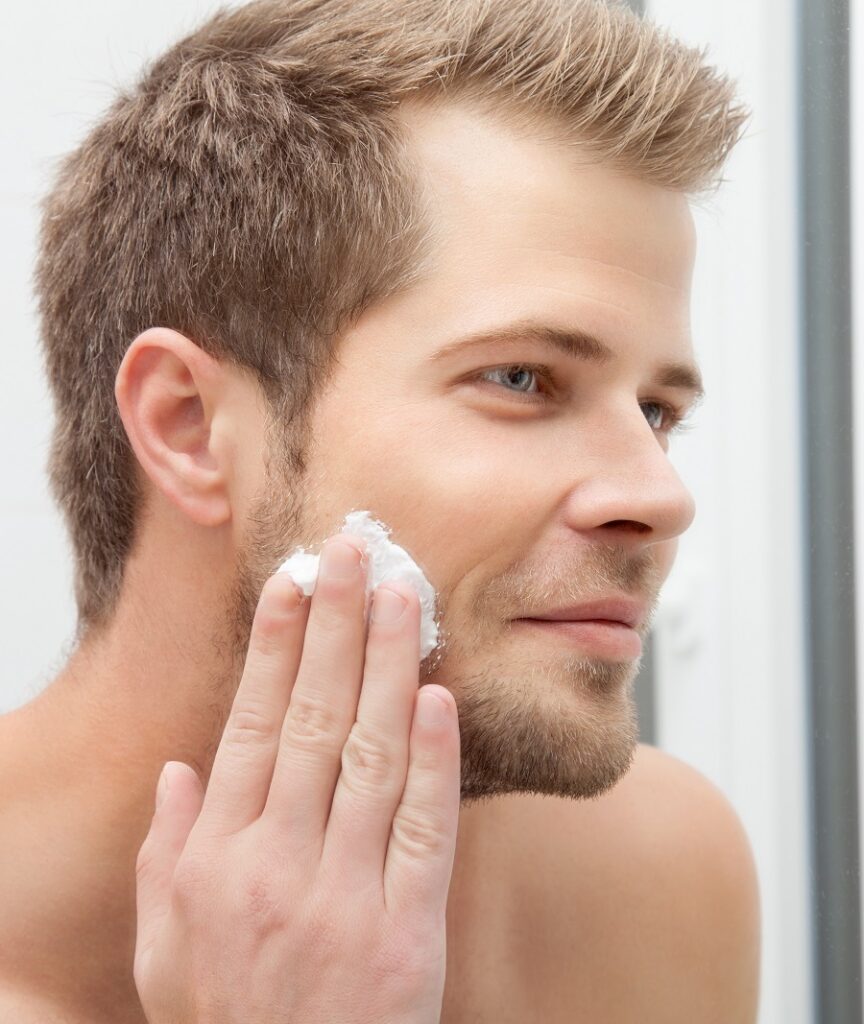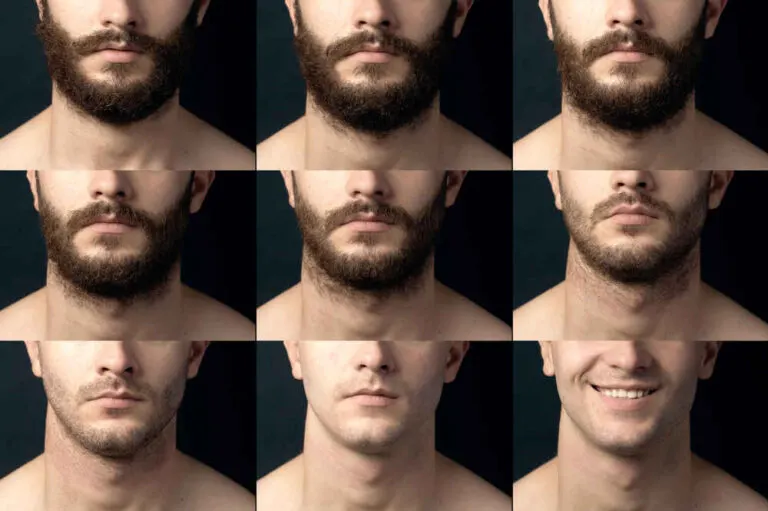How to Dye a Stubble Beard at Home: DIY Dyeing
Dyeing a stubble beard is often considered a task best left to professionals. The small size of your facial hair can be difficult to color since it is so close to your skin. There are risks of staining your skin with beard dye, achieving uneven beard color, and more.
However, just because dyeing a stubble beard is challenging doesn’t mean it can’t be done at home. In fact, you won’t need to spend your hard-earned dollars at the salon for coloring your short beard once you know the process.
This guide will not only help to save you money by dyeing your stubble beard at home but also provide you with knowledge and confidence. You can transform your short beard color all from the comfort of your own home.
So, if you’re ready to learn the ins and outs of dyeing a stubble beard, continue reading our article. You can also check out our article, “Should You Dye Your Beard? Pros and Cons” to clear up any confusion
Can You Dye Stubble Beard?

Though it is more challenging compared to dyeing a full beard due to the shorter length of facial hair and its proximity to the skin, it is indeed possible to dye your short stubble beard at home.
There are several reasons why someone might choose to dye their beard stubble. For some, it’s a matter of style as they even dye their beard white. Others might choose to dye their beard to cover up gray hairs or to create a more uniform color if their natural hair color is uneven. Here are some reasons to dye your stubble beard:
- To make beard color uniform.
- Covering up gray hairs
- Boosting confidence and self-esteem
In the upcoming sections, we will describe the actual dyeing process of a short beard.
How to Dye Your Stubble Beard
You might grapple with questions like, “Can I use hair dye on my beard?” or find yourself confused between choosing a natural darkening method and conventional dyeing. Follow these steps to clear up your confusion.
1. Select the Right Beard Dye
Consider the type of dye you want to use. There are natural dyes, which are made from plant-based ingredients, and chemical dyes, which are made from synthetic ingredients.
Natural dyes are generally less harmful to your skin and hair. But they may not last as long or provide the same range of colors as chemical dyes.
If your goal isn’t to change the color of your stubble beard but rather to darken it, consider using natural darkening methods instead of dyeing it. Here are some tips for choosing your beard dye
- If you have sensitive skin, opt for beard dyes that are gentle and hypoallergenic. These dyes often contain fewer harsh chemicals and natural ingredients, which are less likely to cause skin irritation.
- For a natural look, select a dye that is one or two shades lighter or darker than your hair color. It is not mandatory and you can also experiment with different colors if you are not afraid to look unique.
- Different types of dyes have varying lifespans. Assess how long you want the color to last before you need to reapply. Temporary dyes are suitable for short-term use, while permanent dyes provide long-lasting results. Semi-permanent dyes offer a middle ground in terms of durability.
- Before purchasing a beard dye, read reviews from other users to get a better understanding of the product’s performance, ease of use, and potential side effects. This will help you make an informed decision and select a dye that meets your needs and preferences.
2. Prepare Your Stubble and Skin

Clean and dry your stubble to make it ready for applying the dye. This means washing your beard and skin with a gentle cleanser to remove any dirt, oil, and dead skin cells.
In order to minimize the risk of allergic reactions, carry out a patch test by dabbing a small portion of the dye on an inconspicuous area of your skin, such as behind your ear, and check for any signs of irritation or redness after 24 hours.
3. Apply the Dye
Considering you have a short beard, applying the dye requires extra care and precision. Here’s how to do it:
- Put on gloves to protect your hands from staining and irritation.
- Mix the dye according to the instructions provided by the manufacturer.
- Use a small brush or applicator to apply the dye to your beard. Start at the roots and work your way toward the tips.
- Be careful not to get the dye on your skin, as it may cause staining. You can use a barrier cream or petroleum jelly around the edges of your beard to prevent this.
- Ensure even coverage by working in small sections and double-checking that you haven’t missed any spots.
4. Wait for the Color to Set
Be patient and wait for the beard dye to set on your stubble. Be cautious and avoid lying on your bed, as it may stain your pillow and bedsheet. Additionally, if anything touches your beard, there’s a high probability of uneven color.
It’s generally recommended to wait 10 to 30 minutes before washing the beard dye from your short beard. However, different beard dyes have different waiting times. So it’s always better to follow the manufacturer’s instructions.
If you wait longer than the recommended time you might end up with one or two shades darker. If this happens you should lighten your darker beard with hydrogen peroxide. If you wait lesser time you will get a lighter shade of your desired beard color.
5. Wash the Dye

Wash your beard after your waiting time is over. Make sure to rinse your short beard well, leaving no residue behind. Avoid using beard wash within 24 hours, as it may lighten your newly dyed beard color. Here are some tips to wash your beard dye:
- Wet your beard with cold or lukewarm water. Using hot water will damage your short beard’s color.
- Gently massage the water into your beard to loosen the beard dye.
- Rinse your beard with a steady stream of water. Make sure to remove all traces of the dye.
- Continue rinsing until the water runs clear.
- Pat your beard dry with a clean towel. Be careful not to rub the skin underneath.
Tips for Maintaining Dyed Beard Stubble
To keep your dyed beard stubble looking fresh and vibrant, it’s essential to practice proper beard care.
Taking care of your newly dyed beard stubble is essential to keep the color looking fresh and your beard healthy. Here are some tips to help you maintain your dyed beard stubble:
- Use a color-safe beard wash: Opt for a beard wash that’s specifically designed for color-treated hair. This will help preserve the color and prevent it from fading too quickly.
- Moisturize your beard: Keep your beard hydrated by using a beard oil or balm. This will help to maintain its health and prevent dryness, itchiness, or irritation.
- Avoid harsh chemicals: Stay away from harsh chemicals found in some grooming products, as they can strip the color from your beard and damage the hair.
- Protect your beard from the sun: Prolonged exposure to the sun can cause your beard color to fade. Use a beard balm or oil with UV protection to shield your beard from the sun’s harmful rays.
- Touch up the color as needed: Since the dyed part of your beard has a shorter length you will have to retouch the color every 2-3 weeks. This will keep the color looking fresh and vibrant. Else the newly grown part will be visible.
So, you have mastered how to dye a short beard. Choose your favorite color and start rocking your stubble with colors.






